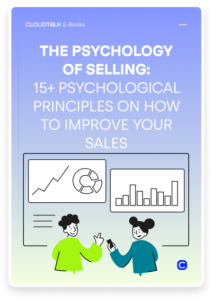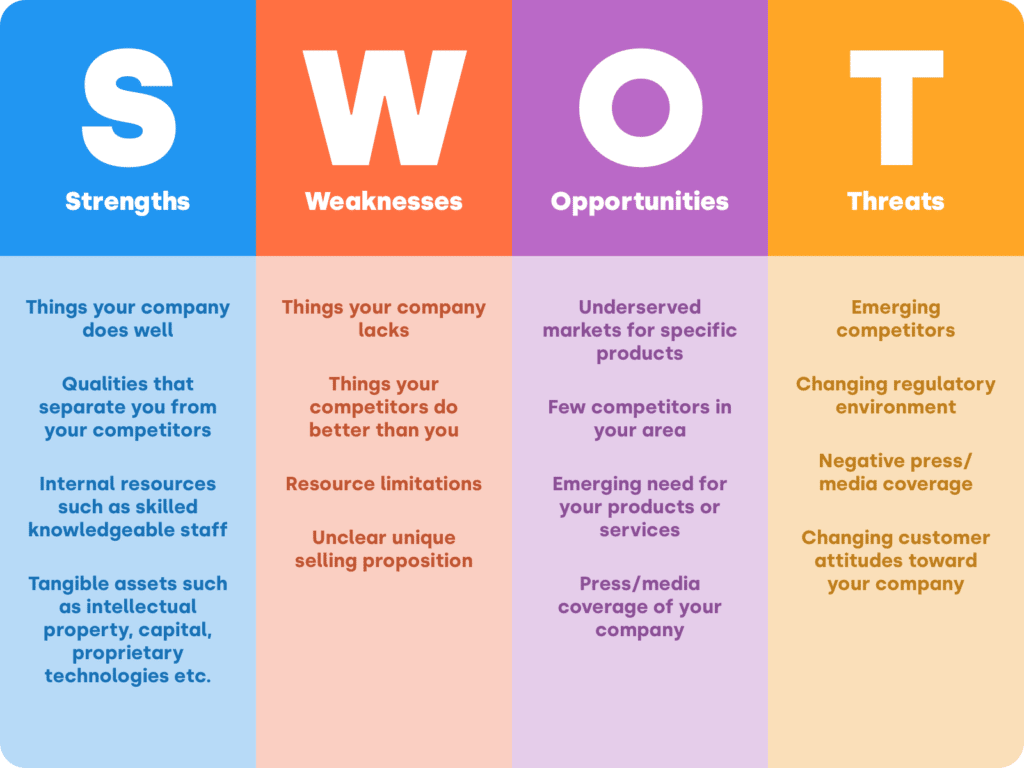A Step-By-Step Guide to an Efficient Sales Territory Plan

According to Harvard Business Review, quality territory design can increase your revenue by 2 to 7 %. That’s why the territory plan is an important strategic groundwork for sales.
It helps you understand where your opportunities are. How to reach the right potential clients and achieve your goals. If it lacks balance, you invest too much time into non-potential leads and too little energy into profitable ones.
Questa guida ti accompagnerà attraverso i passi necessari per creare un piano del territorio di vendita di successo.
Cos’è il piano del territorio di vendita?
It is a strategy for effectively targeting and approaching prospects, leads, and existing customers. The main objective is to close more deals. Traditionally, sales territories were created solely by geographical locations. That is where the word “territory” originates. Salespeople focused on prospects within a specific geographic area.
Al giorno d’oggi, è tutto cambiato grazie all’era digitale. I rappresentanti contattano leads e clienti per telefono, email, o altri canali virtuali. Le riunioni individuali di vendita ormai sono state quasi completamente eliminate.
Quindi, un approccio lavorativo che sia prettamente geografico ha perso di scopo.
The territory mapping template now covers many factors:
- Types of industries
- Business site
- Deal potential
- Customer types
- Account types
- Referral source
- Degree of purchasing a product
- Etc.
Scale your business with the Psychology of Selling!

Il ruolo attuale della mappatura del territorio è di fissare quote di vendita adeguate, definire i vari campi strategici e ridurre i costi. Su tali basi, i manager dovrebbero fornire il team di un piano efficiente per migliorare la produttività. I rappresentanti di vendita possono quindi lavorare in modo strategico per rispondere alle giuste esigenze dei clienti.
Un piano territoriale di qualità dovrebbe avere diversi obiettivi principali:
- Assign the right segments to the right reps based on their expertise
- Optimize customer experience by equipping the team with unique challenges
- Build a base for strong, lasting customer relationships
- Ensure that sales teams’ work ensures the strongest ROI possible
Perché la pianificazione del territorio di vendita è importante?
La Sales Management Association ha condotto un sondaggio con circa 100 organizzazioni. Quelle con una progettazione efficace del territorio hanno avuto obiettivi di vendita maggiori del 14% rispetto alla media. Al contrario, lo stesso studio afferma che le istituzioni con piani inefficienti hanno avuto un tasso di successo inferiore del 15% rispetto alla media.
Pertanto, creare un modello del piano territoriale delle vendite incoraggia davvero l’efficienza e aumenta i profitti. Diamo un’occhiata ad alcuni dei vantaggi più importanti.
Higher progress and optimized strategies: Segmenting your opportunities by detailed criteria helps you to build a tactical approach towards sales. With data-driven insights into territories, you improve performance and see strengths as well as weaknesses. Therefore, you make more strategic decisions.
Più tempo per le vendite: Gli studi degli analisti del settore mostrano ripetutamente un declino nella produttività a causa di approcci poco produttivi verso le vendite. Come istruire gli operatori su segmenti che altri rappresentanti probabilmente già conoscono.
In contrast, Harvard Business Review claims that businesses show a sales increase of up to 7 % by simply redesigning their focus. Having a great territory mapping strategy, therefore, leads to less time for unnecessary training and more space for selling.
Carico di lavoro equilibrato: Il modello di mappatura territoriale aiuta a evitare che le persone siano controproducenti lavorando sullo stesso compito. Assicura che ogni rappresentante di vendita sia a pieno regime nel proprio campo. In questo modo, potrai anche diminuire la frustrazione degli operatori e ridurre il turnover.
5 passi per creare un piano del territorio di vendita
A balanced sales territory plan makes wonders for your business. Yet, you need a unique approach. One that fits your business specifically. What works for one company doesn’t necessarily have to work for another.
Qui ci sono 5 passi che dovresti seguire per creare un piano territoriale adatto.
#1 Definisci i tuoi traguardi e obiettivi aziendali
- Financial Goals
Prima di inizare a pianificare, devi sapere quello che vuoi ottenere. Ci sono molti approcci diversi per fissare gli obiettivi di vendita.
Per prima cosa, parliamo degli obiettivi finanziari. Inizia dall’alto – da grandi numeri di vendita – e scendi verso il basso. Fissa i tuoi obiettivi finanziari annuali. Poi suddividili in trimestri, mesi e perfino settimane.
Ad esempio: Supponiamo che il tuo obiettivo annuale sia di 500.000 dollari. Di conseguenza il tuo obiettivo trimestrale sarà di 125.000 dollari e quello mensile di 41.700 dollari..
Unsure what your annual goal should be? For starters, it’s good to take last year’s sales numbers and add ten percent to them. Of course, this depends on your financial situation. It can be more, and it can be less.
- Strategic Goals and Objectives
Continuiamo con un piano riguardo agli obiettivi che stai cercando di raggiungere. Ciò porterà più chiarezza ai tuoi obiettivi aziendali e alle tendenze del settore.
To put together what you are trying to achieve, answer the following questions:
- What is the mission you are heading towards?
- What do you want to offer your customers?
- What are key trends in your industry?
- Do you comply with these trends?
- What is your average conversion rate?
- How many prospects do you need to meet your goals?
- Which of your services is selling the best?
- Why can that be?
Questo è il primo passo verso la creazione di un sistema di mappatura territoriale produttiva.
#2 Analizza il tuo mercato e segmenta i tuoi clienti
Dopo aver chiarito i tuoi obiettivi, dovresti scavare più a fondo nel tuo settore di mercato e dividere i tuoi clienti in segmenti. Questo si può fare in base a diverse caratteristiche. Settore, cronologia degli acquisti, posizione o qualsiasi altro dato rilevante.
Definisci i tuoi clienti:
Esplorare il tuo mercato mette in mostra chiaramente chi sono i tuoi clienti.
Utilizza queste domande per osservarli più da vicino:
- What is your target group’s common pain point?
- What do they often purchase?
- How does it lead to deals you have won?
- What caused a loss of deals you didn’t win?
Segmenta i tuoi clienti:
Determine how to segment based on what is relevant for your business. You can divide the criteria by B2B and B2C sectors.
- For B2B (business-to-business) sales: department function, organizational roles or business type and size, etc.
- For B2C (business-to-consumer) sales: behavioral patterns, location, demography, psychography, etc.
Definisci le principali tendenze di mercato:
It may be based on your market or on geographical location. Simply, on anything relevant to your business focus. The main point is to identify your business environment.
Cosa cercare:
- What are the key trends in your industry based on diverse criteria?
- What makes your business unique?
- How can you use your findings to drive more sales?
Besides searching for new findings, look at relevant statistics you have already collected. An intelligent revenue platform Xactly claims that with the right data insights, companies can reduce territory planning time by up to 75 %.
Based on your current findings, select those territories that show signs of growth in comparison to the past results. Then assign these to your best-fitting sales reps. This way, they will know how to drive sales based on trend-evolving tendencies.
Valuta la concorrenza
Your own business data is not the only way to analyze and segment a market base for territory planning. You can, and you should learn a lot from your competition.
First, put together who they are. Then, think of what they offer and why customers choose their products. How can you use it, so they rather choose you next time?
Osserva le caratteristiche del prodotto di un concorrente e paragonale alle tue.
Segui principalmente questi criteri:
- Pricing
- Reviews
- Positioning
- Use-cases
#3 Fissa gli obiettivi e crea i target
Until now, you had defined your goals, analyzed your market environment, and segmented your customers. Now it’s time to create targets. Well-tailored targets let you achieve bigger things.
Our advice – do it S.M.A.R.T. This abbreviation represents how your targeting strategy should look: Specific, Measurable, Achievable, Relevant, and Time-based.
Create targets for both your teams but also for individual reps. These will put your business into order, as well as uncover what works and what needs to be modified. It will also motivate your sales agents to be more productive and motivated.
Quindi come ottieni degli obiettivi specifici, misurabili, attuabili e temporali? Il target dovrebbe essere il più tangibile e ben organizzato possibile. Hai bisogno di avere in mente un numero preciso di target, ma non mettere troppa pressione sui tuoi operatori di vendita. Altrimenti, finiranno per essere confusi e frustrati.
Ecco un esempio pratico:
Rather than setting a target of closing 60 deals a year to meet quotas, set a target of making 15 calls each week. A smaller number in a relatively short time feels much more tangible. This way, you are giving your agents a task but empowering them to take a charge of how they handle it. The above-mentioned approach is also easier for you to monitor.
#4 Svolgi un’analisi SWOT
L’analisi SWOT è un gioco da ragazzi. Tuttavia, è uno strumento incredibilmente potente per incrementare la tua strategia aziendale.
Individua fattori base che influenzano la tua azienda, affinché tu possa sviluppare un solido piano territoriale. In questo modo, avrai una chiara comprensione di quale lavoro necessiti la priorità per la crescita dell’azienda.
SWOT consists of 4 words: Strengths, Weaknesses, Opportunities, and Threats.
Punti di forza
Le analisi dei punti di forza ti dicono quali vantaggi puoi utilizzare per far crescere la tua azienda.
Il primo passo è quello di definire gli obiettivi dei tuoi punti di forza:
- Where do they excel?
- What strengths do you want to build on?
- How can you use your team to execute the strategy?
Concentrati soprattutto sull’ultima domanda. I rappresentanti di vendita sono il tuo punto di forza. Ogni persona ha da offrire il proprio background personale ed esperienze uniche. In seguito approfondiremo questo punto.
Debolezze
Adesso pensa ai tuoi punti deboli. Quali sono le vulnerabilità della tua azienda? Esamina i tuoi processi di vendita ma identifica anche i punti deboli del tuo team.
Esempi di quali potrebbero essere i tuoi eventuali punti deboli:
- An overly large geographical area you cover
- Insufficient understanding of your product – from both your and customers’ side
- Lack of understanding to your customer’s real needs
- Chaotic or missing sales tactics
Opportunità
La maggior parte delle aziende dispongono di opportunità di cui non si rendono conto o che non utilizzano. Quali sono le tue? Individua una lacuna nel mercato da poter colmare.
Esempi di eventuali opportunità da tenere d’occhio:
- Lack of competition in your field
- Under-served territories
- Growing demand for your products or services
- Sales representatives with connections to the right customers
Minacce
Così come ci sono le opportunità, esistono anche delle minacce di cui devi essere messo al corrente. In ogni piano territoriale, considera ciò che può recare danno alla tua azienda. In questo modo, potrai facilmente evitarlo.
Esempi di eventuali minacce:
- Unexpected changes in your market
- New industry and regulation standards
- Strong competitors fighting over the same market
Keep in mind that these factors are not standing alone. They work together. What is your strength that may also be a big opportunity? You just need to find the right territory and sales professionals to make use of it.
Ma non devi concentrarti solo su quello da cui puoi trarre vantaggio. Al contrario, una zona che nasconde gravi minacce concorrenziali richiede un’attenzione speciale, al fine di proteggere la tua azienda da qualsiasi sorpresa negativa.
Another important insight – SWOT analysis doesn’t only point out big things, such as revenue, market needs, or geography. It can reveal small issues you shouldn’t overlook. Such as gaps in the systems you otherwise wouldn’t see. Or a need for better training. There may even be a hidden challenge within the product or service you offer.
Therefore, the SWOT analysis is not only here to show precise results. It makes you think complexly about how your business and territory plan works and how it should work.

#5 Assegna i leads
Now that you analyzed where your agents’ best knowledge lies, start assigning the most suitable reps to each territory.
Per prima cosa, ti consigliamo di classificare i tuoi lead secondo il valore. Alcuni di loro probabilmente non porteranno molto profitto. Altri invece sono promettenti, con un’alta possibilità di diventare clienti. E alcuni li hai già in pugno.
- First group: It should contain your most valuable leads. Those who require little effort in order to purchase your product.
- Second group: Here are leads who need a bit more work but still present a pretty high chance of generating revenue. Therefore, they are worth investing more time into.
- Third group: Leads in this category require a lot of effort in order to turn them into paying customers.
Dopo aver formato i gruppi, decidi in che modo usare le tue risorse per rispecchiarli al meglio. Assegna leads da ognuna delle tre categorie ai rappresentanti di vendita adatti. Il primo gruppo probabilmente richiederà il tuo operatore più esperto. Il secondo e il terzo gruppo possono essere gestiti dagli altri.
Also, as we mentioned earlier, use reps’ specific experiences. If you communicate with a lead from the pharmaceutical industry, assign an agent who already has established relationships in this field. She or he, therefore, knows how to talk the leads’ language. Another person can have deep knowledge in closing deals within the financial sector. Use it to your advantage.
Puoi utilizzare anche lo stesso sistema con esperienze sulla base di altri attributi, come l’azienda, la grandezza, la posizione, ecc.
Strumenti che ti servono per costruire il tuo piano del territorio di vendita
Dopo aver completato tutti i passaggi suggeriti dalla nostra guida, avrai bisogno di alcuni strumenti per mettere le cose in pratica. Qui, spiegheremo quali sistemi sono essenziali per eseguire perfettamente il tuo piano territoriale di vendita di qualità.
#1 Software per ufficio
Whatever visual approach you take towards crafting your territory map, you need reliable office software. That helps you turn your plan into tangible documentation, no matter if you seek an image, graph, or table.
Office software usually includes applications for word processing, email, spreadsheets, and presentation decks. The two most popular tools are Microsoft 365 and Google Workspace.
Google Workspace is generally a better choice for small to medium-sized businesses. Those that are good to go with a simple solution. In contrast, Microsoft 365 has enterprise-grade features for big, more complex companies.
Here, you can find an overview of the best office software for 2025.
#2 Mappatura del territorio
Sales territory mapping software is key for each successful plan, taking all important data from the CRM (customer relationship management) system. It assists with organizing information for various territories and visualizing them on a map. This gives you a detailed insight into prospects within a specific area.
Il software di mappatura del territorio di vendita filtra facilmente i dati importanti. Offre degli approfondimenti sul comportamento dei clienti o dei leads. Come le interazioni precedenti o le loro ultime visite. Pertanto, aiutano a scoprire quali siano gli eventuali prossimi passaggi che ti servono per attuare un targeting migliore. Quest’informazione potrebbe essere in seguito facilmente distribuita tra tutti gli operatori.
Managers can also make use of the sales territory mapping software to measure performance and see which process resulted in a sale. It saves time and may result in better collaboration. Between sales reps and leads, as well as between your team members internally.
Ti permette semplicemente di spremere al massimo ogni campo territoriale.
#3 Piattaforma di gestione delle relazioni tra clienti
Un sistema CRM facilita di molto il trattamento dei dati. Ti consente di tracciare tutti i dettagli importanti sui prospects per poter interagire con loro. Il CRM contiene un’intera cronologia delle comunicazioni e monitora tutte le informazioni necessarie.
In questo modo, i tuoi rappresentanti avranno sempre accesso a ogni dettaglio, che li supporterà a concludere più accordi. L’analisi dei dati nel CRM aiuta anche le aziende con la fidelizzazione dei clienti e la crescita degli account.
Specialmente quando le integri con il tuo software di chiamata. In questo modo, automatizzi il processo di unire i dati da entrambi i sistemi in uno solo. Puoi tenerli in un posto singolo e ben organizzato.
#4 Software di comunicazione del team di vendita
Quasi tutto quello che facciamo oggi, lo facciamo a distanza. Se vendi, avrai bisogno di numerose piattaforme di comunicazione online. Come le email, account di social media, SMS o un sistema di chiamata di qualità.
Yet, for current needs, an old analog call center phone setup just doesn’t do the work anymore. Your reps are probably traveling a lot or working from home. A cloud-based calling solution – an online phone – allows them to contact leads and customers from anywhere. They can also receive inbound calls on their own laptops or phones without using a personal number.
Senza aver bisogno di ulteriori hardware. Il software fa tutto il lavoro.
Inoltre, le linee telefoniche tradizionali sono sprovviste di innumerevoli funzioni. Queste possono incrementare rapidamente le tue vendite. Ad esempio, possedere delle statistiche che valutano i dati direttamente dal tuo software rappresenta un vantaggio enorme per creare un piano territoriale di vendita efficace.
Then, there is a call recording feature. This cuts the time for personally observing new sales reps’ performance. You may listen to their phone calls. Anytime, from anywhere. It further helps agents with closing deals faster and collects valuable insights for your territory planning. Since you can come back to each conversation, call recording lets you explore customers’ pain points, needs, likes, and dislikes.
Through the call monitoring feature, you can listen to phone calls in real-time. It allows you to enter the call when agents need help. It also lets you talk with your reps without the caller hearing you or even joining the conversation. Call monitoring often discovers a space for additional mentoring.
With skill-based routing, you can put your territory mapping findings into action. The tool allows you to assign the best-fitting agents to the best-fitting clients. Or utilize VIP queuing to make your most precious customers feel important.
In CloudTalk, we have all these features and 70 + more. Build your sales territory plan with an industry-leading cloud-based calling solution.























